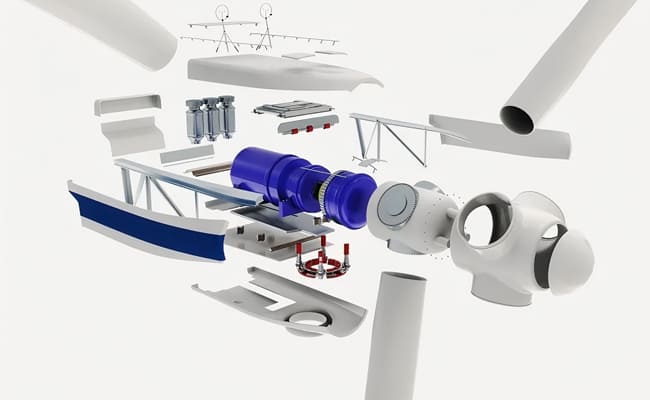As the global energy landscape continues to evolve, wind power has gained increasing attention as a clean and renewable energy solution. Especially in off-grid power generation, new energy systems, and distributed energy applications, wind turbines are playing a larger role. So, what exactly distinguishes wind turbines from conventional generators? In this article, we will explore the core differences between the two, covering working principles, applications, environmental impact, economic benefits, and structural design.
1. The Fundamental Difference in Power Sources
Wind turbines rely on wind energy as their power source. The wind blows the blades, causing them to rotate, converting wind energy into mechanical energy, which is then converted into electricity by the generator. Wind turbines operate solely on natural wind power without the need for external fuel inputs.
In contrast, conventional generators depend on external energy sources, such as diesel, gasoline, or natural gas. These energy sources power an internal combustion engine or hydraulic turbine, which drives the generator to produce electricity. While conventional generators can start quickly and provide stable power, they rely heavily on fuel consumption, which leads to higher operational costs over time.
2. Different Applications
Wind turbines are widely used in:
-
Wind farms (both onshore and offshore)
-
Rural distributed power generation
-
Residential wind power systems
-
Wind-solar hybrid systems
Wind turbines are particularly suitable for new energy development and off-grid power supply, making them an excellent choice for remote or rural areas.
On the other hand, conventional generators are typically used for:
-
Temporary power at construction sites
-
Backup power for factories
-
Mobile power sources
-
Outdoor events and short-term power needs
3. Environmental Impact and Sustainability
Wind turbines are considered zero-emission, low-noise, and environmentally friendly. They do not produce carbon dioxide or other harmful gases. Since wind energy is renewable and inexhaustible, wind generator represent a clean energy solution that aligns with global goals for carbon neutrality and sustainable development.
In contrast, conventional generators produce significant emissions, including carbon dioxide, and contribute to noise pollution. They are not as environmentally friendly as wind generator, making them less ideal in the context of green energy transitions.
4. Efficiency and Long-Term Costs
Modern wind turbines, with high-performance blades and optimized designs, can achieve efficiencies of over 60%. Although the initial investment is relatively high, wind turbines have low operating costs, with virtually no fuel expenses and a long operational lifespan.
Conventional generators are more affordable upfront and have quick start-up times, but they require ongoing fuel purchases and frequent maintenance. The long-term operating costs of conventional generators are much higher compared to wind turbines.
5. Structural Design Differences
Wind turbines generally consist of:
-
Blades (wind rotor)
-
Generator
-
Tower
-
Controller and inverter
Some systems also include wind speed sensors, yaw systems, and smart control components to optimize performance under varying wind conditions.
Conventional generators, however, have a more compact design, typically consisting of:
-
Generator head
-
Fuel tank
-
Control panel
-
Internal combustion engine
Generators can also be classified as either manual start or automatic start, depending on the use case.
6. The Future of Wind Power
As global attention shifts towards clean energy, wind power systems are rapidly expanding. wind generator are becoming increasingly essential in applications such as home energy independence, powering electric devices, and renewable energy systems.
In terms of energy efficiency, environmental impact, and long-term operational costs, wind turbines have clear advantages over conventional generators. They are not only more environmentally friendly but also better suited for the future of clean energy.

